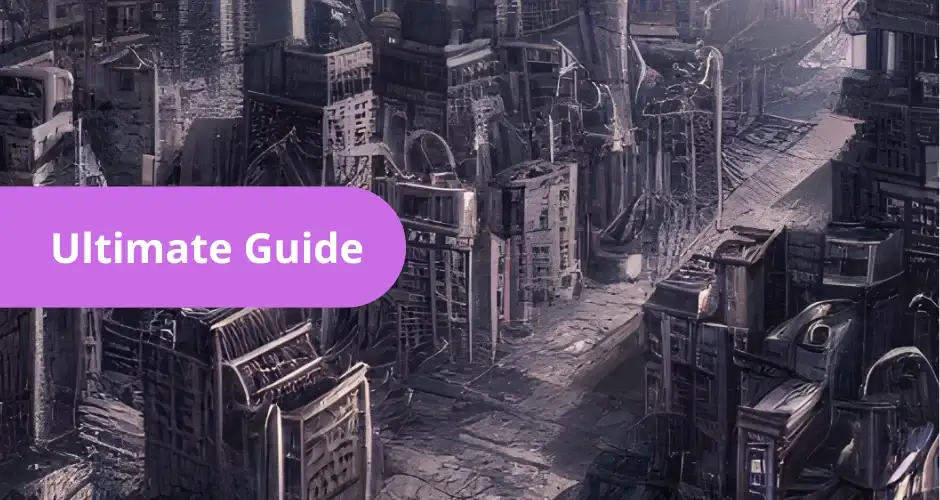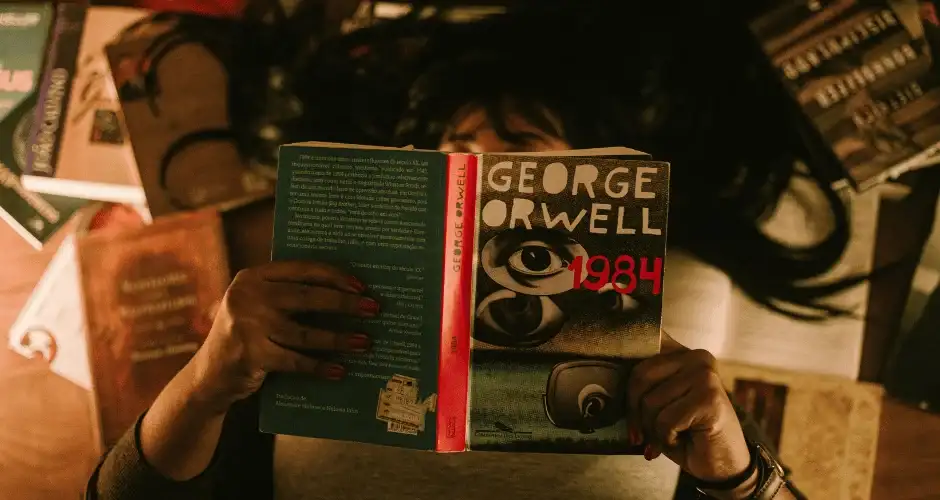GUEST POST
How to Write an A* Essay for the OCR A-Level English Dystopian Comparison Question

If you are studying OCR English A Level, now is the time to have full clarity on what an examiner will be looking for in your Dystopia Comparison essay. Those looking to push for the top grades will need to know how to hit the Assessment Objectives for this question.
Above all, you must show the examiner that you know the Four C’s:
- Context
- Comparison
- Content
- Critics
This guide is written by a qualified A-Level English online tutor to help simplify the Assessment Objectives, offer actionable changes to your essays to make sure you cover the Four C’s, and give some direction on how you should be revising to put you in a position to write that A* standard essay come the day of the exam.
What Do I Get Marks for in This Paper?
In the comparative essay, you are aiming to hit the following Assessment Objectives: AO1, AO3, AO4 and AO5 [1]. Those of you that are mathematically inclined as well as literary minded will note that AO2 is missing from that list. AO2, your ‘language analysis’, will do you very little good in this paper.
You will receive no reward for close language analysis in this answer, no matter how insightful it is. Your Unseen Dystopia question rewards AO2, once you have finished it you can forget your close language analysis. Instead, it is important to know how the other four AO’s work in this essay, and how each one is weighted by the examiner.
On a question with a maximum score of 30 marks, those marks are awarded across the AO’s as follows: A03 dominates with 50% of the marks, A04 will get you 25% of the marks, and A01 and A05 are awarded 12.5% each. So, it is clear that you are prioritising hitting AO3 and AO4, as these will get you 75% of your marks. Being able to show your skills in AO1 and AO5 is going to push you up into that A* bracket. But what do each of the AO’s mean, and what do examiners actually want to see?
What is AO3?
You are hopefully aware that AO3, in short, is literary context. Dystopias are not just creative stories about nightmare worlds; they are written in response to the horrors the writers see in their own reality. Dystopias reflect their history – some in obvious ways, some in more nuanced or implicit ways. Always, what is alarming about society, culture and politics in a dystopian writer’s time becomes apparent in their novel. The horrors that alarmed Orwell in his era, the horrors that alarmed Atwood in hers, so too for Huxley, Burgess and so on.
AO3 is showing your examiner you understand the ways in which an idea, a symbol, a character or a plot point in a dystopian text could be informed by a historical moment, a figure or an idea. When writing about context in your essays, you must keep two questions in mind. What could have been the influence, and why is it relevant to my argument?
Take writing an essay point about Orwell’s context for 1984, for example. You are answering a question on ‘the importance of controlling the youth’ in dystopian fiction. A key argument will focus on the Parsons’ children; the youth organization called the Spies and Mr Parson’s denunciation to the Thought Police. Knowledge of these details from 1984 will gain you AO1 marks because you are showing detailed familiarity with the text – more of this later.

What do you do here for AO3? You explain that the Parsons’ children can be understood as a representation of a number of twentieth-century youth indoctrination schemes that Orwell would have concerned by. Those include the Hitler Youth, of course, but extend beyond that one example to the Komsomol youth group in Soviet Russia. There might even be an argument for the nationalism of the Boy Scouts in Britain being of some concern to Orwell when writing 1984. Remember the two questions – what influence, what relevance? What does the Parsons’ children’s behaviour tell us about how Orwell saw these real-life groups, and how can I make that support my argument about the ‘importance of controlling the youth’ in dystopia?
It is important to remember that AO3 is equally rewarded for the context in which dystopian texts are ‘received’. What does this mean? Anything that you can argue a reader is prompted to think of by a dystopian symbol/character/narrative point is of equal value to arguing about what a writer was thinking of. For example, contemporary readers of The Handmaid’s Tale are going to reflect on the context of Roe V Wade being overturned in 2022 when reading about the enforced surrogacy of the Handmaid’s. This is worth keeping in mind if you draw a blank on what influenced a dystopian writer. You can make a valid and rewardable AO3 point about the modern day social, cultural or political landscape if it is clearly linked to an idea from the dystopian text.
Above all, examiners want to see context that is specific, varied and relevant. Not just a series of vague references to Nazi Germany tacked on to paragraphs! A range of historical and more contemporary literary contexts, across both texts. Candidates often fret about whether the AO3 should be woven into the body paragraph or a dedicated portion at the end of the paragraph. There is no examiner guidance on this, so it should not matter. However, essays that include their remarks about context in the course of their argument, rather than as an afterthought, naturally appear more thought out and more clearly structured. It is by no means going to disbar you from the top grade if you are unable to write in this fashion, but it certainly helps if you can experiment with weaving your AO3 into your answer as you go.
What is AO4?
AO4 is effective comparison between two or more texts. Sort of essential for a comparison essay, right? This can only be done well if you have a strong line of argument that answers the question. Once that is in place, you can show how the two texts take similar or differing approaches to the idea in the question. How do texts agree or differ on the key ideas e.g. fear, surveillance, family, environmental destruction etc. Again, this is best demonstrated through an example.
Returning to the ‘controlling the youth’ question, this time let’s add The Handmaid’s Tale to the mix for the purposes of our comparison. We choose to argue that controlling young people is essential to maintaining power in dystopian societies. Are Orwell and Atwood completely the same on this? Not at all. Orwell places the Spies front and centre in the drama, children are presented as vicious agents of the state. For Atwood, through Offred’s perspective, we see children largely as the innocent victims of Gilead’s manipulation of the family dynamic. They are prized by the regime but do not play nearly as significant a role in the story as in 1984. This is a nuance between the two texts, this can be rewarded as AO4. We might even push this further, making a judgment about 1984 having a lower view of children as complicit in control whereas The Handmaid’s Tale highlights the innocence of youth.
Whatever your comparison, it should be clear that it will not be effective without a line of argument that grapples closely with the terms of the question. To foster good comparisons, consider the following questions while revising your texts side-by-side:
- What are the top five concerns for each dystopia? Where do they differ/agree?
- What are some patterns of character behaviour that are similar/noticeably different?
- Which dystopia ends more optimistically?
- Which dystopia is more ideological?
What is AO1?
Reductive as it sounds, you have to know your two texts in detail. Character arcs, plot structure, key motifs and symbols. You need to be able to refer not only to the beginning and end of the novels, but key developments and changes through the middle portion. Re-read the texts, write crib sheets, test yourself. The better you know your texts, the more widely you can draw from them to make unique and better-argued points. A huge bank of quotations is not necessarily your aim here. While it is true a handful of critical lines from the texts will serve you well, it is better to be able to refer to characters, moments, ideas and developments. Know your stuff, folks.
What is AO5?
Finally, AO5 is demonstrating you understand there is a wider argument about the texts you’re discussing. Many readers and critics have come before you, each with their own take. Feminist critics, Marxist, post-structuralist, New Historical and so on. To gain marks on AO5, you need to convince an examiner that you are aware of these schools of thought and how they factor into your argument. This is not just an exercise in quoting critics, but making their take on the text instrumental to yours. Seek out critical interpretations on Massolit, York Notes, the OCR English A Level Specification and Teaching Guides, as well as JSTOR.
Ask your teacher (or A-Level English online tutor) for a bank of critics, broken down by which school they belong to. Categorise your criticism into which essays it would be useful to add as a revision exercise. Lastly, remember that a paraphrase or a mention of a critic without a full quotation is still rewardable, and you need not panic if exact quotations go astray under exam pressure.
What do I do now?
Now you know exactly what an examiner expects from you for this question, there is nothing to do but the obvious: practice. Write essays or write essay plans, whatever you think is most time-effective for you. Submit them to your teachers or A-Level English online tutor, but seek feedback from your classmates too!
You will conquer this question with practice and a strong working knowledge of your set texts. The speculations of dystopian fiction may be frightening, but you have a bright future ahead once you emerge from Room 101, or whatever your school calls its own exam halls.
Good luck!
[1] OCR. A Level English Literature H472/02: Comparative and Contextual Study – Mark Scheme June 2022. Oxford Cambridge and RSA Examinations, 2022,
Students
Tutors

Cain J
Tutor
English Teacher from two of Britain's finest independent schools
Looking for a tutor?
Sherpa has hundreds of qualified and experienced UK tutors who are ready to help you achieve your goals. Search through our tutors and arrange a free 20 minute introduction through our industry-leading online classroom.
Find a TutorSimilar Articles





